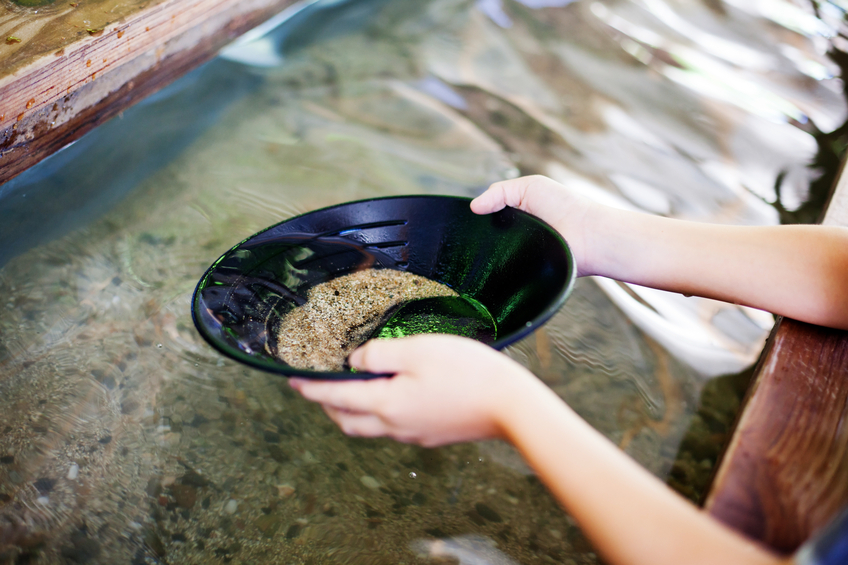When you walk into Roaring Camp, you’ll see the sheer amount of old mining equipment that’s been used over the years here. Housed in our Mining Artifact Museum, you can see the artifacts of the past. From weather-worn antiques used in the pioneering days of the Gold Rush, you’ll be able to tell that some of the most effective tools haven’t changed. Just like a hammer hasn’t changed in thousands of years, neither has the way a gold pan operates. Today, they’re just often made with better materials. You’ll also see just how much other elements of gold mining have changed, from the simple to the complex.
You’ll also see a lot of gold, pulled from our own rivers. We’re proud to be able to operate in an area that’s still being actively mined, even to this day. The steep grade coming down Mokelumne River Canyon helps expose gold, but it also contributed to making the area difficult to access before modern vehicles. This lack of accessibility made it hard for gold miners from the 1850s to 1900 to get enough supplies – it’s difficult to mine and pan when you lack the basic necessities of life. (What they wouldn’t have done for our Saturday Night Cookout Dinner!)
With modern vehicles, that access is much easier, and because the area was kept relatively intact before, there’s a lot of gold that’s still to be found. In fact, panning has been very effective because of the gold that’s washed down those same steep cliff grades that made living here so difficult in the pioneering days.
We offer full-day tours into the canyon where you can learn to pan for gold, see the trading post and our museums, and can enjoy the day hunting, swimming, fishing, bird-watching, or just relaxing by the river.

